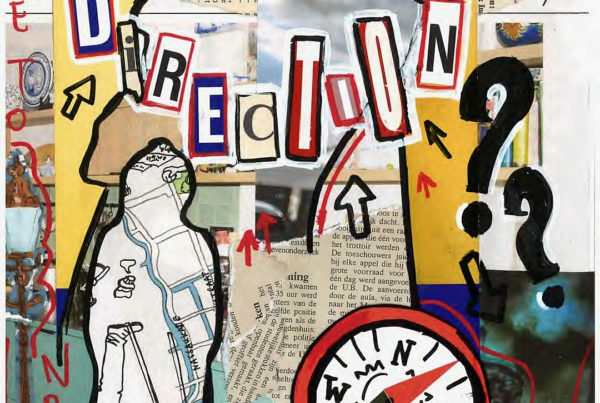
We live in a time of vast physical abundance, yet a profound mental health scarcity. Why is it that we increasingly crave more intense stimulation just to feel a semblance of normality? How can we learn to find happiness in the small, casual magic that surrounds us?
We live in a time of vast physical abundance, yet a profound mental health scarcity. Why is it that we increasingly crave more intense stimulation just to feel a semblance of normality? How can we learn to find happiness in the small, casual magic that surrounds us?

Photo by Feliphe Schiarolli

Photo by Feliphe Schiarolli
Life has never been more customizable. We are becoming video game characters with hundreds of building blocks shaping our image that can be tailor-made just for us. From the aesthetic we subscribe to, to the creators we follow, to the music that forms the soundtrack of our lives, to the book characters that we find comfort in; they all weave the cloth of our personality. In other words, we have never been more individualistic. We are hooked on the idea that every little facet of us should be unique, and society encourages it. Today, we log onto social media and find the mist of fantasy that cloaks every inch of our reality. The fantasy of being extraordinary is your ticket to success nowadays. Who you are is your personal brand; it is your gateway into universities, jobs, and relationships. You must tweak the building blocks just enough so that you come across as unique and desirable, but not so much that you are seen as an extremist. By far the worst thing you can be today though, is boring; nobody can sell boring. Boring only results in a vicious swipe left in 0.5-1 second. (Orosz et al., 2016).
Thus, from the perspective of a consumer, you are constantly buried in extremes designed to differentiate one product from another amidst a sea of highly stimulating content. Attention has become the most valuable, elusive currency, and everybody is clawing for it. Songs are shorter, faster, and all start with a hook, crafted for a viral moment. TV shows have shrunk from 24 lifestyle-focused sitcom episodes to extremely potent, fast-paced mini-series designed to grab hold of your attention and not let go until you’ve effectively spent 3 days in your bed without seeing the sun or eating anything that doesn’t give you dyslexia by just reading the ingredient list. In movies, the explosions are bigger, the gestures are grander, and the jump cuts even jumpier.
All this begs the question: Why are we like this? What keeps us doom-scrolling for hours at a time? What keeps us from stopping Netflix when it so helpfully launches the next episode without us having to lift a finger? What drives us to skip to the next song when we approach the slow second verse? The correct answer, of course, is dopamine. Thanks for playing.
“By far the worst thing you can be today though, is boring; nobody can sell boring.”
Ah, yes, dopamine – more addictive than your ex and just as complicated. Known as the molecule of more, the molecule of exploration and novelty, the molecule of motivation. In other words, the buzzword of the century. But perhaps not without good reason. Let us review: Dopamine is a crucial neurotransmitter that plays a significant role in regulating pleasure, motivation, and reward-seeking behaviours. It is primarily produced in the ventral tegmental area (VTA) and the nucleus accumbens, which are key regions in the brain’s reward circuitry. Dopamine levels exist at a baseline when we are not engaged in stimulating activities but fluctuate considerably in relation to our drives and motivation.
When we participate in rewarding behaviours—such as eating, exercising, or receiving social validation—dopamine levels surge, enhancing feelings of pleasure and reinforcing the behaviour. However, this system is also characterized by a phenomenon known as dopamine dysregulation; after the initial reward, dopamine levels dip below baseline, leaving individuals with a sense of dissatisfaction which leads to continued seeking of the reward and promotes the behaviour that leads to it. (Lembke, 2021)
One interesting area where this comes into play is operant conditioning, in particular when it comes to the frequency of actually receiving the reward that the behaviour was seeking. Variable ratio reinforcement schedules exemplify how unpredictability in rewards can strengthen behaviours. For example, when rewards are delivered inconsistently—like receiving a compliment, winning a game, or receiving an interesting piece of content on your next scroll—individuals are more likely to repeat the behaviour in anticipation of future rewards. This is because the brain learns that persistence may eventually lead to pleasurable outcomes, effectively keeping individuals engaged even longer than if the rewards were constant and consistent. (Ferster & Skinner, 1957)
“We sometimes simply follow what spontaneously appears in our lives, take it in its rawest form, and try to find beauty and enjoyment in it without wearing the rose-coloured glasses.”
Hedonic Adaptation
Wow, what a magical little molecule. But here is the crazy part. Let me introduce you to the phenomenon of hedonic adaptation – the lowering of the brain’s dopamine baseline over time due to continuous engagement in behaviours that trigger high dopamine release, such as doom-scrolling, binge-watching, binge-eating, consuming drugs, etc. This leads to feelings of dissatisfaction and a decreased ability to enjoy everyday activities that previously brought you joy. Anna Lembke, in her enlightening book Dopamine Nation: Finding Balance in the Age of Indulgence, explains that when the brain’s reward system is overstimulated, it undergoes neurochemical changes that diminish the pleasure derived from both high-reward and everyday activities. As a result, you may find yourself caught in a cycle of seeking out ever-more-potent stimuli to achieve the same high, ultimately leading to a downward spiral of addiction and mental health issues (Lembke, 2021). In practice, this would for example look like watching an episode of your favourite TV show while simultaneously scrolling through Instagram because the show alone could not hold your attention anymore.
Back to the Roots
Evolutionarily speaking, dopamine serves a very important function – that of survival and reproduction. If we did not have dopamine receptors, we would likely not be motivated to search for food and would die quite quickly. Rats, for example, which were treated with drugs that blocked the dopamine receptors in the nucleus accumbens, would still eat and enjoy food that was placed right in front of them but would not exhibit any effort to obtain it if the food was placed some distance away, no matter how hungry they were. (Robinson & Berridge, 2003) Thus, safe to say, dopamine certainly serves its purpose. The problem arises when you introduce dopamine to the modern lifestyle of abundance. Now, the same reward-seeking behaviours that kept us alive in a resource-scarce environment continue to keep us alive of course, but they also continue to seek rewards, even when there is plenty to go around, which can eventually lead to hedonic adaptation. Perhaps the solution to our diminished enjoyment lies in bridging today’s hedonistic materialistic lifestyle with the scarcity and struggle we’ve left behind. Enter Wu Wei.
Wu Wei: The lost art of doing nothing
The podcasters of the Silicon Valley hustle culture fame would probably call this a dopamine fast – completely adequate labelling of the technique. But I like Wu Wei better. Wu Wei refers to the Taoist concept of doing nothing, literally translated as “not doing” or “non-action”. Its most important principle is adhering to the natural law and order of events – going with the flow of nature and life. To a Western mind that glorifies the workaholic lifestyle, this type of philosophy might seem foreign. This is not to say that Wu Wei means slacking around all day wallowing in our couch potato clothes. It means “doing effortlessly” without overloading our whole capacity for enjoyment to the point of numbness in the meantime. It means that we sometimes simply follow what spontaneously appears in our lives, take it in its rawest form, and try to find beauty and enjoyment in it without wearing the rose-coloured glasses. It means that perhaps, for a day or two, we stop looking for the most immersive VR experience and instead look for ways to immerse ourselves in the waves of our true tangible environment. The way to best approximate this to our modern understanding would be what we call being “in the zone”- a state of deep concentration and flow towards what we are doing, only that we mostly use this in regard to work, while in Taoism you are meant to implement this principle into the very fabric of your outlook on life – indefinitely.
To quote Dao De Jing, the central text of Taoism: “The Way never acts, yet nothing is left undone.” (Laozi, 6th century BCE)
At the end of the day, we have to be realistic. No one is going to unsubscribe from all streaming platforms, never watch a movie again, and flush their phone down the toilet. Nobody can pretend that it is not convenient to have what is essentially the Library of Alexandria at the tips of our fingers. However, I do think it is important that we implement Wu Wei into our lives in some capacity. Just plugging out of our noise-cancelling bubble occasionally can make a significant difference. Instead of chasing extremes to dull the pressure of extreme individuality, we could sometimes exist in the casual magic of the everyday and enjoy the connection in how similar we all are in our shared human experience. <<
References
- Ferster, C. B., & Skinner, B. F. (1957). Schedules of reinforcement. Appleton-Century-Crofts.
- Isham, A., et al. (2021). The influence of materialism on flow. International Journal of Wellbeing, 11(3), 52-72. https://doi.org/10.5502/ijw.v11i3.965
- Joshanloo, M. (2014). Cultural perspectives on happiness: The relevance of wu wei in understanding well-being. Journal of Happiness Studies, 15(2), 481-498. https://doi.org/10.1007/s10902-013-9444-1
- Laozi. (1997). Tao Te Ching (D. C. Lau, Trans.). Penguin Classics. (Original work published ca. 6th century BCE)
- Lembke, A. (2021). Dopamine nation: Finding balance in the age of indulgence. Dutton.
- Lieberman, D. Z., & Long, M. E. (2018). The molecule of more: How a single chemical in your brain drives love, sex, and creativity and will determine the fate of the human race. Humanix Books.
- Lomas, T. (2021). The need for balance in positive psychology: Incorporating wu wei into well-being research. European Journal of Positive Psychology, 6(1), 1-15. https://doi.org/10.1007/s40862-021-00104-5
- Orosz, G., Tóth-Király, I., Bőthe, B., Schaub, M. P., Szabo, A., & Ürös, G. (2016). Too many swipes for today: The development of the Problematic Tinder Use Scale (PTUS). Journal of Behavioral Addictions, 5(3), 518–523. https://doi.org/10.1556/2006.5.2016.056
- Robinson, T. E., & Berridge, K. C. (2003). The incentive-sensitization theory of addiction: Some current issues. Philosophical Transactions of the Royal Society B: Biological Sciences, 358(1432), 1635-1646. https://doi.org/10.1098/rstb.2003.1300
Life has never been more customizable. We are becoming video game characters with hundreds of building blocks shaping our image that can be tailor-made just for us. From the aesthetic we subscribe to, to the creators we follow, to the music that forms the soundtrack of our lives, to the book characters that we find comfort in; they all weave the cloth of our personality. In other words, we have never been more individualistic. We are hooked on the idea that every little facet of us should be unique, and society encourages it. Today, we log onto social media and find the mist of fantasy that cloaks every inch of our reality. The fantasy of being extraordinary is your ticket to success nowadays. Who you are is your personal brand; it is your gateway into universities, jobs, and relationships. You must tweak the building blocks just enough so that you come across as unique and desirable, but not so much that you are seen as an extremist. By far the worst thing you can be today though, is boring; nobody can sell boring. Boring only results in a vicious swipe left in 0.5-1 second. (Orosz et al., 2016).
Thus, from the perspective of a consumer, you are constantly buried in extremes designed to differentiate one product from another amidst a sea of highly stimulating content. Attention has become the most valuable, elusive currency, and everybody is clawing for it. Songs are shorter, faster, and all start with a hook, crafted for a viral moment. TV shows have shrunk from 24 lifestyle-focused sitcom episodes to extremely potent, fast-paced mini-series designed to grab hold of your attention and not let go until you’ve effectively spent 3 days in your bed without seeing the sun or eating anything that doesn’t give you dyslexia by just reading the ingredient list. In movies, the explosions are bigger, the gestures are grander, and the jump cuts even jumpier.
All this begs the question: Why are we like this? What keeps us doom-scrolling for hours at a time? What keeps us from stopping Netflix when it so helpfully launches the next episode without us having to lift a finger? What drives us to skip to the next song when we approach the slow second verse? The correct answer, of course, is dopamine. Thanks for playing.
“By far the worst thing you can be today though, is boring; nobody can sell boring.”
Ah, yes, dopamine – more addictive than your ex and just as complicated. Known as the molecule of more, the molecule of exploration and novelty, the molecule of motivation. In other words, the buzzword of the century. But perhaps not without good reason. Let us review: Dopamine is a crucial neurotransmitter that plays a significant role in regulating pleasure, motivation, and reward-seeking behaviours. It is primarily produced in the ventral tegmental area (VTA) and the nucleus accumbens, which are key regions in the brain’s reward circuitry. Dopamine levels exist at a baseline when we are not engaged in stimulating activities but fluctuate considerably in relation to our drives and motivation.
When we participate in rewarding behaviours—such as eating, exercising, or receiving social validation—dopamine levels surge, enhancing feelings of pleasure and reinforcing the behaviour. However, this system is also characterized by a phenomenon known as dopamine dysregulation; after the initial reward, dopamine levels dip below baseline, leaving individuals with a sense of dissatisfaction which leads to continued seeking of the reward and promotes the behaviour that leads to it. (Lembke, 2021)
One interesting area where this comes into play is operant conditioning, in particular when it comes to the frequency of actually receiving the reward that the behaviour was seeking. Variable ratio reinforcement schedules exemplify how unpredictability in rewards can strengthen behaviours. For example, when rewards are delivered inconsistently—like receiving a compliment, winning a game, or receiving an interesting piece of content on your next scroll—individuals are more likely to repeat the behaviour in anticipation of future rewards. This is because the brain learns that persistence may eventually lead to pleasurable outcomes, effectively keeping individuals engaged even longer than if the rewards were constant and consistent. (Ferster & Skinner, 1957)
“We sometimes simply follow what spontaneously appears in our lives, take it in its rawest form, and try to find beauty and enjoyment in it without wearing the rose-coloured glasses.”
Hedonic Adaptation
Wow, what a magical little molecule. But here is the crazy part. Let me introduce you to the phenomenon of hedonic adaptation – the lowering of the brain’s dopamine baseline over time due to continuous engagement in behaviours that trigger high dopamine release, such as doom-scrolling, binge-watching, binge-eating, consuming drugs, etc. This leads to feelings of dissatisfaction and a decreased ability to enjoy everyday activities that previously brought you joy. Anna Lembke, in her enlightening book Dopamine Nation: Finding Balance in the Age of Indulgence, explains that when the brain’s reward system is overstimulated, it undergoes neurochemical changes that diminish the pleasure derived from both high-reward and everyday activities. As a result, you may find yourself caught in a cycle of seeking out ever-more-potent stimuli to achieve the same high, ultimately leading to a downward spiral of addiction and mental health issues (Lembke, 2021). In practice, this would for example look like watching an episode of your favourite TV show while simultaneously scrolling through Instagram because the show alone could not hold your attention anymore.
Back to the Roots
Evolutionarily speaking, dopamine serves a very important function – that of survival and reproduction. If we did not have dopamine receptors, we would likely not be motivated to search for food and would die quite quickly. Rats, for example, which were treated with drugs that blocked the dopamine receptors in the nucleus accumbens, would still eat and enjoy food that was placed right in front of them but would not exhibit any effort to obtain it if the food was placed some distance away, no matter how hungry they were. (Robinson & Berridge, 2003) Thus, safe to say, dopamine certainly serves its purpose. The problem arises when you introduce dopamine to the modern lifestyle of abundance. Now, the same reward-seeking behaviours that kept us alive in a resource-scarce environment continue to keep us alive of course, but they also continue to seek rewards, even when there is plenty to go around, which can eventually lead to hedonic adaptation. Perhaps the solution to our diminished enjoyment lies in bridging today’s hedonistic materialistic lifestyle with the scarcity and struggle we’ve left behind. Enter Wu Wei.
Wu Wei: The lost art of doing nothing
The podcasters of the Silicon Valley hustle culture fame would probably call this a dopamine fast – completely adequate labelling of the technique. But I like Wu Wei better. Wu Wei refers to the Taoist concept of doing nothing, literally translated as “not doing” or “non-action”. Its most important principle is adhering to the natural law and order of events – going with the flow of nature and life. To a Western mind that glorifies the workaholic lifestyle, this type of philosophy might seem foreign. This is not to say that Wu Wei means slacking around all day wallowing in our couch potato clothes. It means “doing effortlessly” without overloading our whole capacity for enjoyment to the point of numbness in the meantime. It means that we sometimes simply follow what spontaneously appears in our lives, take it in its rawest form, and try to find beauty and enjoyment in it without wearing the rose-coloured glasses. It means that perhaps, for a day or two, we stop looking for the most immersive VR experience and instead look for ways to immerse ourselves in the waves of our true tangible environment. The way to best approximate this to our modern understanding would be what we call being “in the zone”- a state of deep concentration and flow towards what we are doing, only that we mostly use this in regard to work, while in Taoism you are meant to implement this principle into the very fabric of your outlook on life – indefinitely.
To quote Dao De Jing, the central text of Taoism: “The Way never acts, yet nothing is left undone.” (Laozi, 6th century BCE)
At the end of the day, we have to be realistic. No one is going to unsubscribe from all streaming platforms, never watch a movie again, and flush their phone down the toilet. Nobody can pretend that it is not convenient to have what is essentially the Library of Alexandria at the tips of our fingers. However, I do think it is important that we implement Wu Wei into our lives in some capacity. Just plugging out of our noise-cancelling bubble occasionally can make a significant difference. Instead of chasing extremes to dull the pressure of extreme individuality, we could sometimes exist in the casual magic of the everyday and enjoy the connection in how similar we all are in our shared human experience. <<
References
- Ferster, C. B., & Skinner, B. F. (1957). Schedules of reinforcement. Appleton-Century-Crofts.
- Isham, A., et al. (2021). The influence of materialism on flow. International Journal of Wellbeing, 11(3), 52-72. https://doi.org/10.5502/ijw.v11i3.965
- Joshanloo, M. (2014). Cultural perspectives on happiness: The relevance of wu wei in understanding well-being. Journal of Happiness Studies, 15(2), 481-498. https://doi.org/10.1007/s10902-013-9444-1
- Laozi. (1997). Tao Te Ching (D. C. Lau, Trans.). Penguin Classics. (Original work published ca. 6th century BCE)
- Lembke, A. (2021). Dopamine nation: Finding balance in the age of indulgence. Dutton.
- Lieberman, D. Z., & Long, M. E. (2018). The molecule of more: How a single chemical in your brain drives love, sex, and creativity and will determine the fate of the human race. Humanix Books.
- Lomas, T. (2021). The need for balance in positive psychology: Incorporating wu wei into well-being research. European Journal of Positive Psychology, 6(1), 1-15. https://doi.org/10.1007/s40862-021-00104-5
- Orosz, G., Tóth-Király, I., Bőthe, B., Schaub, M. P., Szabo, A., & Ürös, G. (2016). Too many swipes for today: The development of the Problematic Tinder Use Scale (PTUS). Journal of Behavioral Addictions, 5(3), 518–523. https://doi.org/10.1556/2006.5.2016.056
- Robinson, T. E., & Berridge, K. C. (2003). The incentive-sensitization theory of addiction: Some current issues. Philosophical Transactions of the Royal Society B: Biological Sciences, 358(1432), 1635-1646. https://doi.org/10.1098/rstb.2003.1300



